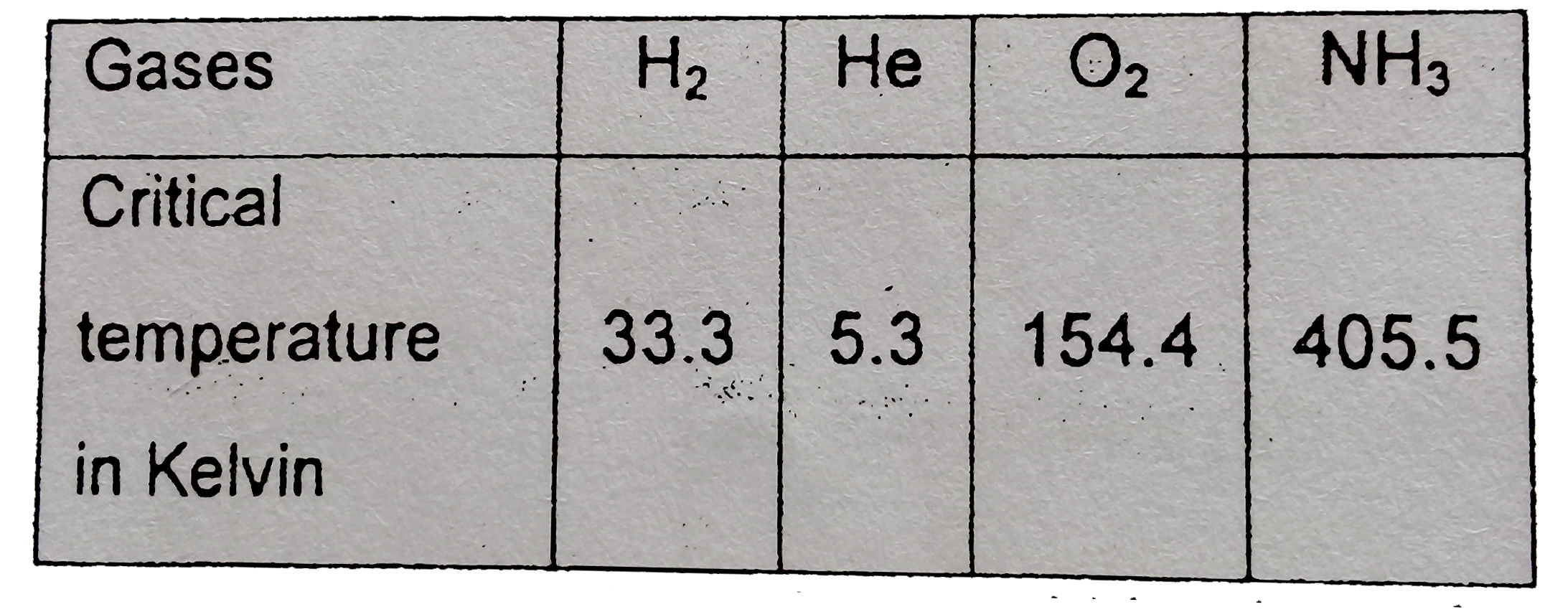
Gases possess characteristic critical temperature which depends upon the magnitude of intermolecular forces between the particles. Following are the critical tempeatures of some gases. From the above data what would be the order of liquefaction of these gases? Start writing the order from the gas liquefying first.
He,H2,O2,NH3
NH3,O2,H2,He
NH3,He,O2,H2
none of these
The correct Answer is:B
Step by step video, text & image solution for Gases possess characteristic critical temperature which depends upon the magnitude of intermolecular forces between the particles. Following are the critical tempeatures of some gases. From the above data what would be the order of liquefaction of these gases? Start writing the order from the gas liquefying first. by Chemistry experts to help you in doubts & scoring excellent marks in Class 12 exams.
Updated on:21/07/2023Similar Questions
Gases possess characteristic critical temperature which depends upon the magnitude of intermolecular forces between the gas particles. Critical temperatures of ammonia and carbon dioxide are 405.5 K and 304.10 K respectively. Which of these gases will liquify first when you start cooling from 500 K to their critical temperature ?
View SolutionGases possess characteristic critical temperature which depends upon the magnitude of intermolecualr forces between the gas particles, critical temperatures of ammonia and carbon dioxide are 405.5 K and 304.10 K respectively. Which of these gases will liquefy first when you start cooling from 500 K to their critical temperature ?
View Solution
Knowledge Check
Gases posses characteristic critical temperature which depends upon the magnitude of intermolecular forces between the particles. Following are the critical temperatures of some gases.
GasesH2HeO2N2Critical temperature in kelvin33.25.3154.3126
From the above data what would be the order of liquefaction of these gases ? Start writing the order from the gas liquefying firstAH2,He,O2,N2BHe,O2,H2,N2CN2,O2,He,H2DO2,N2,H2,HeGases posses characteristic critical temperature which depends upon the magnitude of intermolecular forces between the particles. Following are the critical temperatures of some gases.
GasesH2HeO2N2Critical temperature in kelvin33.25.3154.3126
From the above data what would be the order of liquefaction of these gases ? Start writing the order from the gas liquefying firstAH2.He,O2,N2BHe,O2,H2,N2CN2,O2,He,H2DO2,N2,H2,HeGasH2HeO2N2Critical temp. ink33.25.3154.3126
From the above data, what would be the order of liquefication of these gases? Start writing the order for the gas which liquefies first:AH2,H,O2,N2BH2,O2,H2,N2CN2,O2,He,H2DO2,N2,H2,He
Gases possess characteristic critical temperature which depends upon the magnitude of intermolecular forces between the gas particles. Critical temperatures of ammonia and carbon dioxide are 405.5 K and 304.10 K respectively. Which of these gases will liquify first when you start cooling from 500 K to their critical temperature ?
View SolutionWhich one of the following is the correct order in which the gases from the atmosphere disappear as one moves away from the surface of the earth ?
View SolutionAssertion: A gas with higher critical temperature gets adsorbed to more extent than a gas with lower critical temperature.
Reason: The easily liquefiable gases get adsorbed to more extent which have higher critical temperature.
View SolutionAssertion : Lower the cirtical temperature for a gas, more easily can it is liquefied.
Reason : Critical temperature is the temperature above which above which a gas cannot liquefied depending upon the pressure.
View SolutionAssertion : Lower the cirtical temperature for a gas, more easily can it is liquefied.
Reason : Critical temperature is the temperature above which above which a gas cannot liquefied depending upon the pressure.
View Solution
